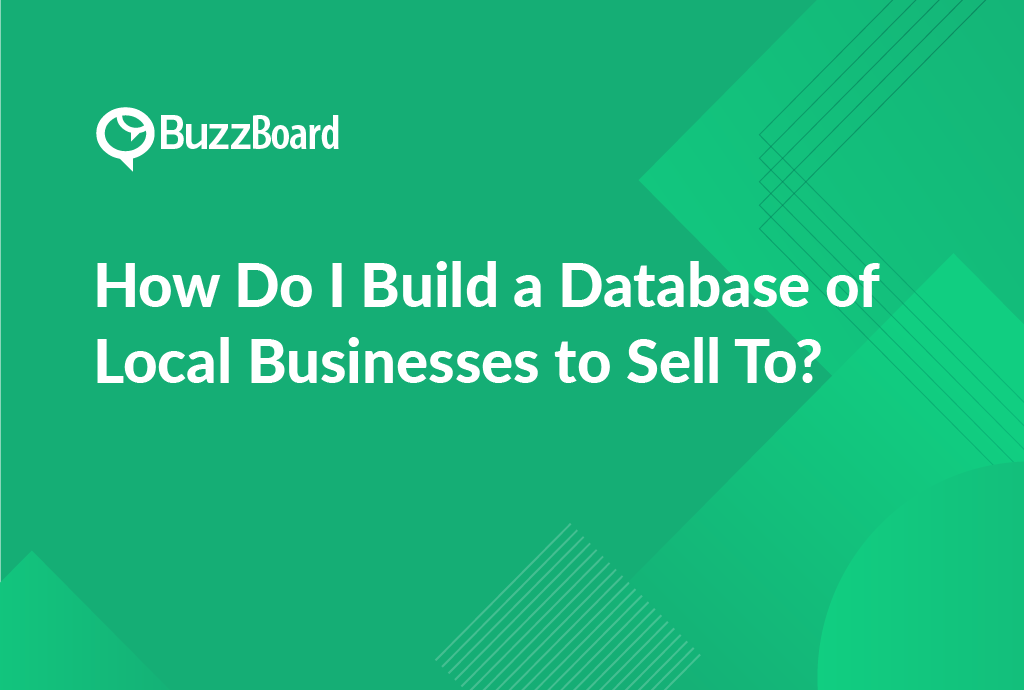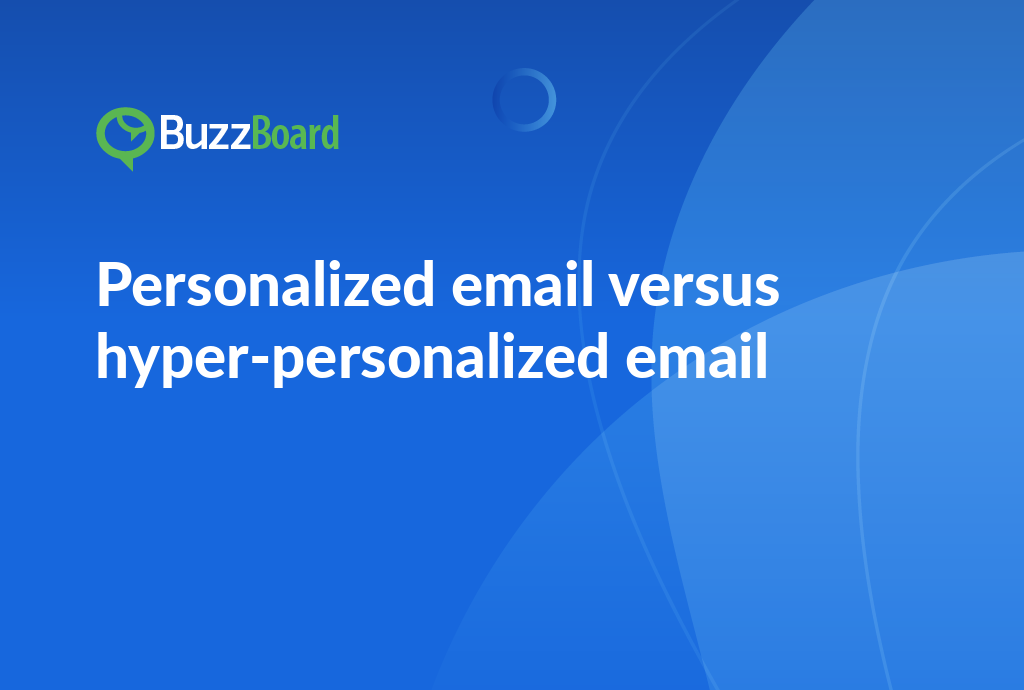Think Local, Build Local
Want to build a database of local businesses to sell to? Start by identifying your target market and gathering data from online directories, social media, and local government websites. Use data scraping tools to collect business information, and validate the data through phone calls or email verification. Organize the data into a structured format, and consider partnering with local business associations or chambers of commerce to gain access to exclusive data.
The Fundamentals of Building a Database of Local Businesses
In today’s competitive market, building a local business database is a crucial step for B2SMB enterprises looking to increase their sales and expand their customer base. A well-crafted database is a powerful tool that enables businesses to target the right audience, tailor their marketing efforts, and ultimately drive revenue growth. In this comprehensive guide, we will delve into the fundamentals of building a local business database, providing actionable tips and strategies to help B2SMB enterprises succeed.
Step 1: Curate a Comprehensive List of Local Businesses
The first step in building a local business database is to curate a comprehensive list of small businesses in your target area. This involves gathering information about potential customers based on location, industry, and other relevant factors. To ensure the accuracy and relevance of your list, it’s essential to:
- Use online directories and databases, such as Yelp or LinkedIn
- Leverage social media platforms to gather information about local businesses
- Conduct market research and surveys to gather insights from local business owners and entrepreneurs
- Verify the accuracy of the information gathered through multiple sources
Step 2: Evaluate and Segment Your List
Once you have compiled your list of local businesses, it’s essential to evaluate and segment your prospects based on factors such as:
- Industry and market niche
- Size and scale of the business
- Years in operation
- Revenue and growth potential
- Geographic location and demographics
This segmentation process enables you to tailor your marketing efforts and sales pitches to the unique needs and challenges of each prospect.
Step 3: Leverage Local Business Insights and Trends
To build a robust local business database, it’s essential to stay up-to-date with local business trends, insights, and news. This involves:
- Monitoring local business publications and news outlets
- Attending industry events and conferences
- Conducting market research and surveys to gather insights from local business owners and entrepreneurs
- Leveraging social media platforms to stay informed about local business developments
Step 4: Craft Personalized Marketing Narratives
Armed with a comprehensive list of local businesses and a deep understanding of their unique needs and challenges, you can craft personalized marketing narratives that resonate with each prospect. This involves:
- Developing targeted marketing campaigns that speak to the specific pain points and challenges of each prospect
- Creating engaging content that showcases your expertise and thought leadership in the industry
- Leveraging storytelling techniques to build emotional connections with local business owners and entrepreneurs
Step 5: Leverage Technology and Innovation
In today’s digital age, leveraging technology and innovation is essential for building a local business database. This involves:
- Utilizing CRM software and marketing automation tools to streamline your sales and marketing efforts
- Leveraging data analytics and business intelligence tools to gain insights into local business trends and patterns
- Utilizing social media platforms and content marketing strategies to engage with local business owners and entrepreneurs
Building a local business database is a critical step for B2SMB enterprises looking to increase their sales and expand their customer base. By following the steps outlined in this comprehensive guide, you can build a robust local business database that enables you to target the right audience, tailor your marketing efforts, and ultimately drive revenue growth. Remember to stay up-to-date with local business trends, insights, and news, and to leverage technology and innovation to streamline your sales and marketing efforts. With the right tools, knowledge, and strategies, you can build a local business database that drives real results for your B2SMB enterprise.
Techniques for Collecting Data on Local Businesses
Sales professionals face the daunting task of gathering accurate and comprehensive data on local small and medium-sized businesses (SMBs). This data is crucial for crafting personalized and effective marketing strategies that drive growth and revenue. In this comprehensive guide, we will delve into the key techniques for collecting data on local businesses, providing actionable tips and strategies to help B2SMB sales professionals succeed.
Step 1: Create a Comprehensive Small Business Prospect List
The first step in collecting data on local businesses is to create a comprehensive prospect list. This involves identifying local businesses that match your ideal target segment and assembling a list of potential customers. This can be achieved through:
- Using online directories and business listings, such as Yelp or LinkedIn
- Leveraging social media platforms to gather information about local businesses
- Conducting market research and surveys to gather insights from local business owners and entrepreneurs
- Verifying the accuracy of the information gathered through multiple sources
Step 2: Engage in Prospecting with Local Businesses
Once you have compiled your list of local businesses, it’s essential to engage in prospecting with these businesses. This involves conducting extensive research into their current operations and business status, which may involve:
- Examining financial reports and financial statements
- Monitoring customer reviews and feedback
- Analyzing social media activity and online presence
- Conducting interviews and surveys with business owners and entrepreneurs
This research will provide valuable insights into the needs and pain points of each business, enabling you to tailor your marketing efforts and sales pitches to meet their unique needs.
Step 3: Leverage Online Platforms and Tools
In today’s digital age, leveraging online platforms and tools is essential for collecting data on local businesses. This involves:
- Utilizing CRM software and marketing automation tools to streamline your sales and marketing efforts
- Leveraging data analytics and business intelligence tools to gain insights into local business trends and patterns
- Utilizing social media platforms and content marketing strategies to engage with local business owners and entrepreneurs
Step 4: Build Relationships and Understand Needs
Collecting data on local businesses is not a one-time task, but rather an ongoing process that requires continuous refining and patience. It’s essential to build relationships with local business owners and entrepreneurs, understanding their needs and pain points, and tailoring your marketing efforts and sales pitches to meet their unique needs.
Collecting data on local businesses is a critical step for B2SMB sales professionals looking to drive growth and revenue. By following the techniques outlined in this comprehensive guide, you can gather accurate and comprehensive data on local businesses, craft personalized and effective marketing strategies, and ultimately drive revenue growth. Remember to stay up-to-date with local business trends, insights, and news, and to leverage technology and innovation to streamline your sales and marketing efforts. With the right tools, knowledge, and strategies, you can build strong relationships with local businesses and drive real results for your B2SMB enterprise.
Maintaining and Updating Your Local Business Database
As a digital marketing agency targeting small and local businesses (SMBs), maintaining and updating your local business database is crucial for successful prospecting. A comprehensive list of small businesses is the foundation of effective prospecting, and regular updates ensure that your database remains accurate and relevant.
Effective Management of the SMB Database
Effective management of the SMB database involves several critical steps. Firstly, regular data cleansing is necessary for current contact information of regional businesses. This includes validating addresses, emails, and phone numbers, which can fluctuate in today’s volatile marketplace. Data cleansing is a vital step in ensuring that your database remains accurate and up-to-date.
The next step is data enrichment. Using appropriate tools, you can enhance the SMB database by appending detailed information about the businesses, such as their industry, size, or social media engagement. This additional data aids in constructing an accurate and efficient prospecting list. Data enrichment enables you to tailor your marketing efforts and sales pitches to the unique needs of each prospect.
Integrating your SMB database with your Customer Relationship Management system (CRM) simplifies the sales process. This synchronization ensures that your sales team always has the most recent information for precise targeting and personalized outreach. A seamless integration between your CRM and SMB database enables your sales team to focus on high-potential leads and tailor their approach to each prospect.
Regular Review and Modification of Leads
Regularly reviewing and modifying your leads is a vital component of a successful prospecting strategy. By doing so, you can ensure that your efforts are focused on the most promising potential customers, rather than wasting time and resources on unresponsive leads. This process involves regularly evaluating the engagement levels and responses of your leads, and making adjustments as needed.
One of the primary benefits of regularly reviewing and modifying your leads is that it allows you to remove unresponsive leads from your prospecting list. This is crucial because unresponsive leads can be a significant drain on your time and resources, and can ultimately hinder your ability to achieve your sales goals. By removing these leads, you can free up more time and resources to focus on the leads that are most likely to convert.
In addition to removing unresponsive leads, regularly reviewing and modifying your leads also enables you to refine your prospecting list. This involves identifying the leads that are most engaged and responsive, and prioritizing your efforts on those individuals. By doing so, you can increase the effectiveness of your prospecting efforts and improve your chances of closing deals.
Furthermore, regularly reviewing and modifying your leads allows you to allocate your resources more effectively. By identifying the leads that are most likely to convert, you can allocate your time and resources more efficiently, and make the most of your prospecting efforts. This can help you to achieve your sales goals more quickly and easily, and can ultimately lead to greater success in your sales career.
Benefits of Maintaining and Updating Your SMB Database
Regularly maintaining and updating your SMB database can substantially enhance your SMB sales efforts. Detailed, accurate information allows your team to customize their approach, fostering relationships and promoting growth. A well-maintained SMB database enables you to:
- Target high-potential leads with personalized marketing efforts
- Enhance the effectiveness of your sales team
- Streamline your prospecting process
- Allocate resources more effectively
- Foster relationships with potential customers
Maintaining and updating your local business database is a critical step for digital marketing agencies targeting SMBs. By following the steps outlined in this comprehensive guide, you can ensure that your database remains accurate, relevant, and effective. Remember to regularly cleanse and enrich your data, integrate your database with your CRM, and review and modify leads based on engagement levels and responses. With a well-maintained SMB database, you can drive real results for your agency and grow your SMB sales efforts.
Using CRM Tools for SMB Targeting
Salespeople in digital marketing agencies have unparalleled opportunities to target small, local and medium-sized businesses (SMBs). With a multitude of local businesses readily accessible, strategically employing CRM (Customer Relationship Management) tools can significantly enhance your SMB targeting efforts.
The Importance of CRM Tools in SMB Targeting
CRM tools are essential for creating a comprehensive list of small businesses, which is a crucial preliminary step in any sales strategy. These tools offer unparalleled convenience in classifying, categorizing, and maintaining a list of small businesses. By leveraging CRM tools, digital marketing professionals can:
- Create a structured database of SMBs
- Discern patterns, trends, and preferences
- Facilitate personalized interactions and targeting
The Benefits of CRM Tools in SMB Targeting
CRM tools offer numerous benefits for salespeople targeting SMBs. These tools enable salespeople to:
- Record interaction history
- Monitor lead generation processes
- Predict future sales probabilities based on existing data patterns
- Automate the labor-intensive process of maintaining a database of SMBs and comprehending their needs
The Role of CRM Tools in SMB Targeting
In action, CRM tools can aid in:
- Recording interaction history: CRM tools enable salespeople to track interactions with SMBs, including phone calls, emails, and meetings.
- Monitoring lead generation processes: CRM tools provide real-time insights into lead generation processes, enabling salespeople to optimize their strategies.
- Predicting future sales probabilities: CRM tools analyze existing data patterns to predict future sales probabilities, enabling salespeople to focus on high-potential leads.
As salespeople traverse the digital B2SMB landscape, it’s imperative that a trustworthy CRM tool is a steadfast companion throughout this journey. CRM tools transform scattered information into organized, significant data points for efficient SMB targeting. By leveraging CRM tools, salespeople can streamline their targeting efforts, enhance their sales performance, and drive real results for their digital marketing agency.
The Importance of Strategic Prospecting
Effective B2SMB marketing requires a deliberate and strategic approach to prospecting, as inconsistent and haphazard efforts can lead to subpar results. Simply having a list of small businesses is not enough; instead, salespeople must prioritize targeted and intentional prospecting to maximize their chances of success.
One of the most significant advantages of using CRM (Customer Relationship Management) tools is their ability to provide valuable insights into potential leads. By leveraging this data, salespeople can identify and prioritize the most promising prospects, rather than relying on indiscriminate mass communications. This targeted approach allows for more effective use of time and resources, increasing the likelihood of converting leads into customers.
In addition to providing valuable insights, CRM tools also enable salespeople to track and analyze their interactions with potential leads, allowing them to refine their approach and adjust their strategy as needed. This level of visibility and control is essential for building strong relationships with small businesses, which are often characterized by complex decision-making processes and multiple stakeholders.
To achieve truly effective B2SMB marketing, salespeople must adopt a strategic and data-driven approach to prospecting. This involves:
- Identifying and prioritizing high-value targets: By leveraging CRM data and insights, salespeople can identify the most promising small businesses and prioritize their efforts accordingly.
- Developing targeted messaging and outreach: With a clear understanding of the target audience, salespeople can craft targeted messaging and outreach strategies that resonate with their prospects.
- Building relationships and trust: By taking a personalized and consultative approach, salespeople can build strong relationships with small business owners and decision-makers, establishing trust and credibility.
- Continuously refining and improving: Through ongoing analysis and feedback, salespeople can refine their approach and adjust their strategy to optimize results.
By adopting a strategic and data-driven approach to prospecting, B2SMB marketers can increase their chances of success and build strong, lasting relationships with small businesses.
Complying with Data Privacy Laws When Building Your Database
Building a small business prospecting list for your B2SMB digital marketing agency requires a deep understanding of the critical data privacy obligations that come with it. Navigating the complex and ever-evolving landscape of data privacy laws can be a daunting task, but compliance is non-negotiable when engaging with local businesses. Failure to comply with data privacy regulations can result in severe consequences, including fines, a tarnished reputation, and even a halt to your prospecting endeavors.
To ensure compliance, it is essential to acquire knowledge about the specific data privacy regulations applicable to your industry’s small businesses. For instance, in the United States, the General Data Protection Regulation (GDPR) and the California Consumer Privacy Act (CCPA) are two comprehensive data protection statutes that require attention. Understanding these regulations is crucial to guide your course of action with small business data and avoid potential legal and reputational risks.
One of the most important aspects of data privacy is the concept of “legitimate interest.” This lawful ground for data processing allows businesses to collect and process data as long as it is necessary for their legitimate interests or the interests of a third party. However, it is essential to maintain transparency regarding the reasons for gathering data, its utilization, and refrain from excessive collection. This means being clear and upfront about how you plan to use the data, and ensuring that the data is not used for purposes that are not compatible with the original purpose for which it was collected.
Consent is another critical aspect of data privacy laws. It is essential to include a clearly visible, understandable consent form that the owner can access and modify at will. This form should outline the purposes for which the data will be used, the types of data that will be collected, and the rights of the data subject to request access, correction, or deletion of their data.
Data security is also a critical component of data privacy. Storing and defending data securely is crucial in demonstrating your commitment to data privacy, especially concerning small businesses. This means implementing measures to safeguard against data breaches, both on-site and in the cloud. This includes using strong passwords, encrypting sensitive data, and implementing regular security audits and penetration testing.
In addition to these measures, it is essential to invest in appropriate technology and protocols to ensure the security and integrity of your data. This may include using data loss prevention tools, implementing access controls, and conducting regular security training for employees.
Data privacy does not promise a straightforward solution. Every B2SMB digital marketing agency has unique data protection and privacy needs, and what works for one agency may not work for another. Therefore, it is essential to tailor your approach to your specific needs and circumstances.
Building a small business prospecting list for your B2SMB digital marketing agency requires a comprehensive understanding of data privacy regulations and a commitment to compliance. By acquiring knowledge about the specific regulations applicable to your industry, maintaining transparency and consent, securing data, and investing in appropriate technology and protocols, you can ensure that your prospecting endeavors are both effective and compliant. Your path to protecting and respecting your prospects’ data starts now, and it is essential to take a proactive and responsible approach to data privacy to build trust and credibility with your clients and prospects.
Conclusion
Building a database of local businesses to sell to requires a strategic approach that involves identifying the right sources, collecting and verifying accurate data, and organizing the information in a way that is easy to access and utilize. By following the steps outlined in this article, you can create a comprehensive database of local businesses that can be used to target specific industries, locations, and demographics.
Whether you’re a marketing agency looking to expand your client base, a sales team seeking to identify new prospects, or an entrepreneur building a new business, having access to a reliable database of local businesses can be a game-changer. By leveraging this data, you can identify new opportunities, streamline your sales process, and ultimately drive revenue growth.
Remember to stay up-to-date with the latest data and to continually refine your database to ensure its accuracy and relevance. With the right tools and strategies in place, you can build a database of local businesses that will help you achieve your goals and stay ahead of the competition.









